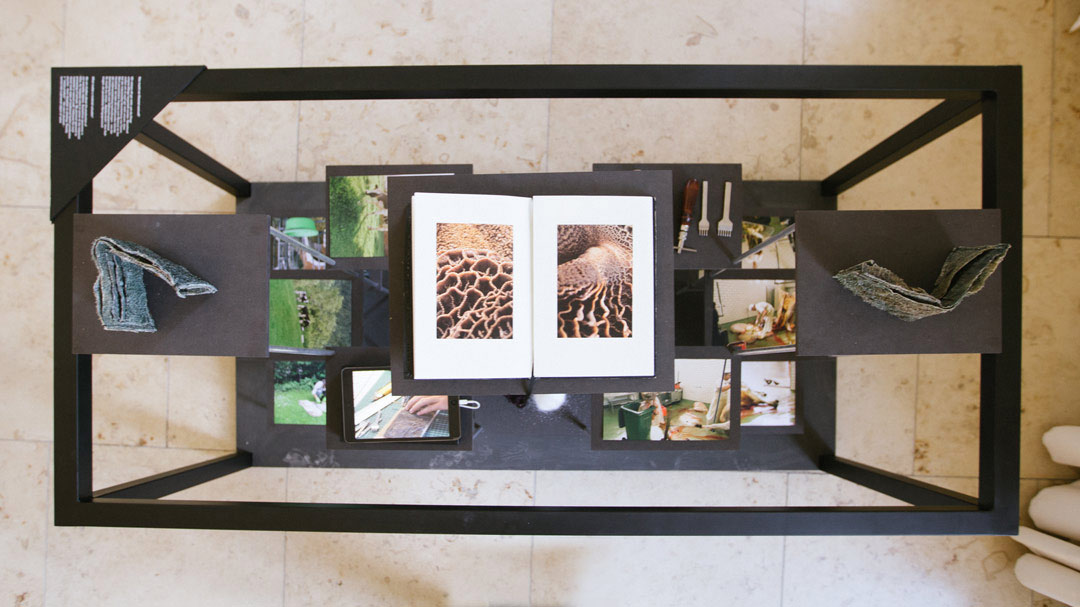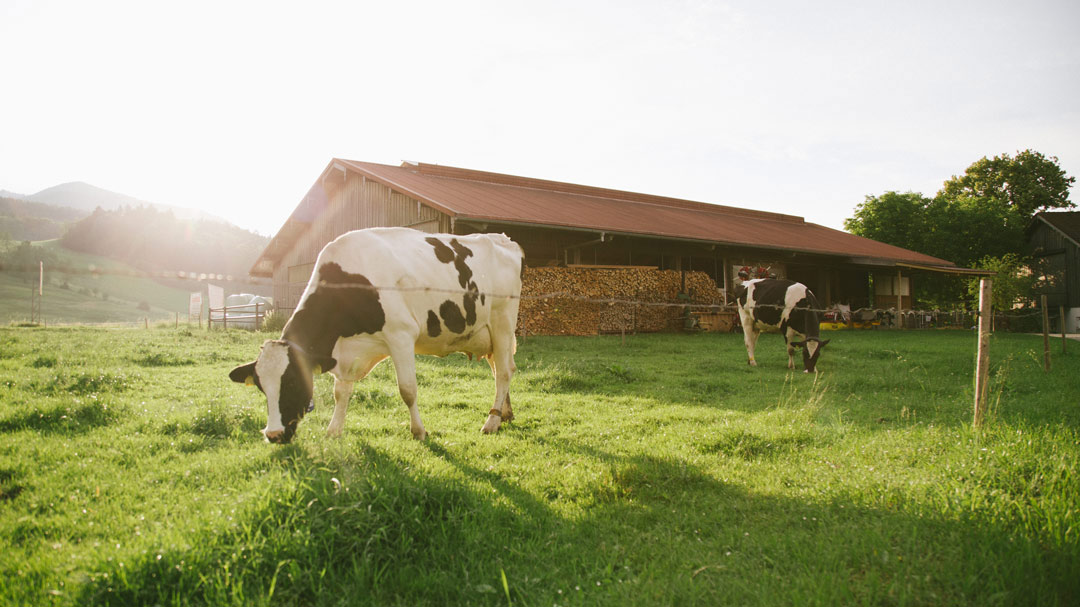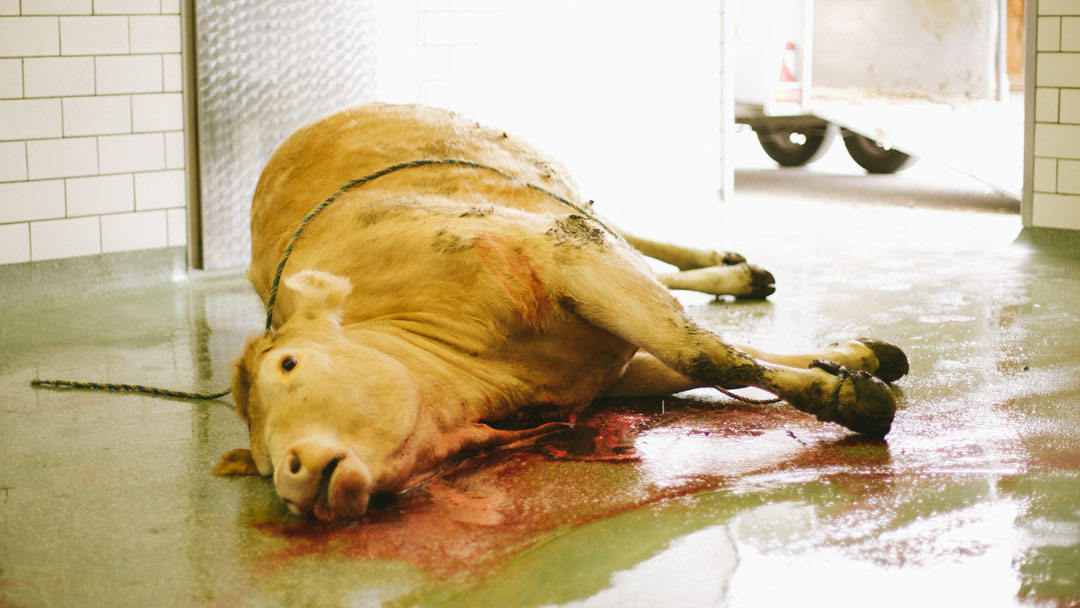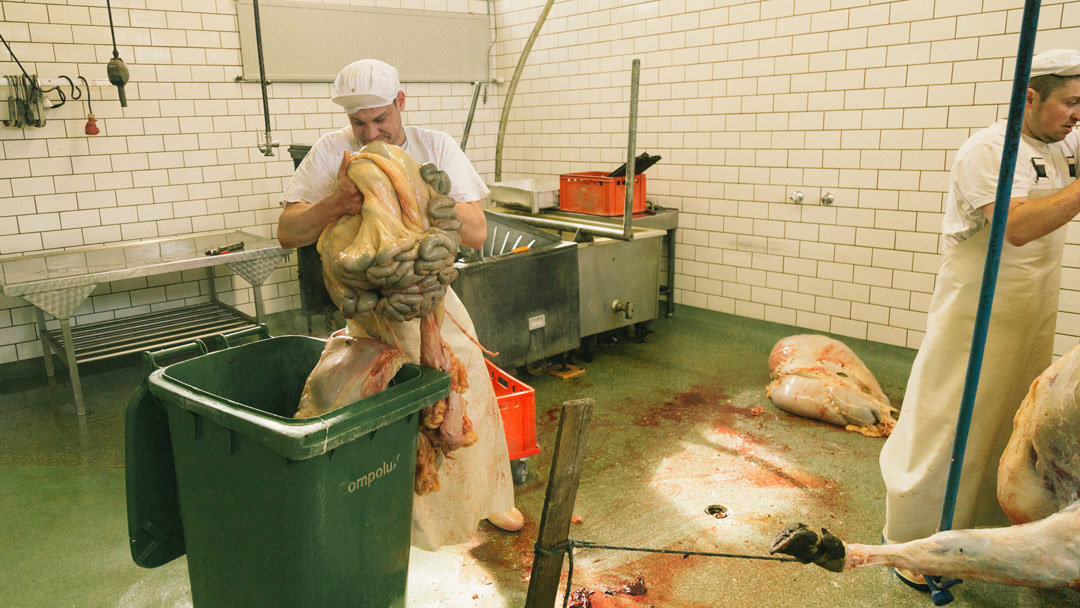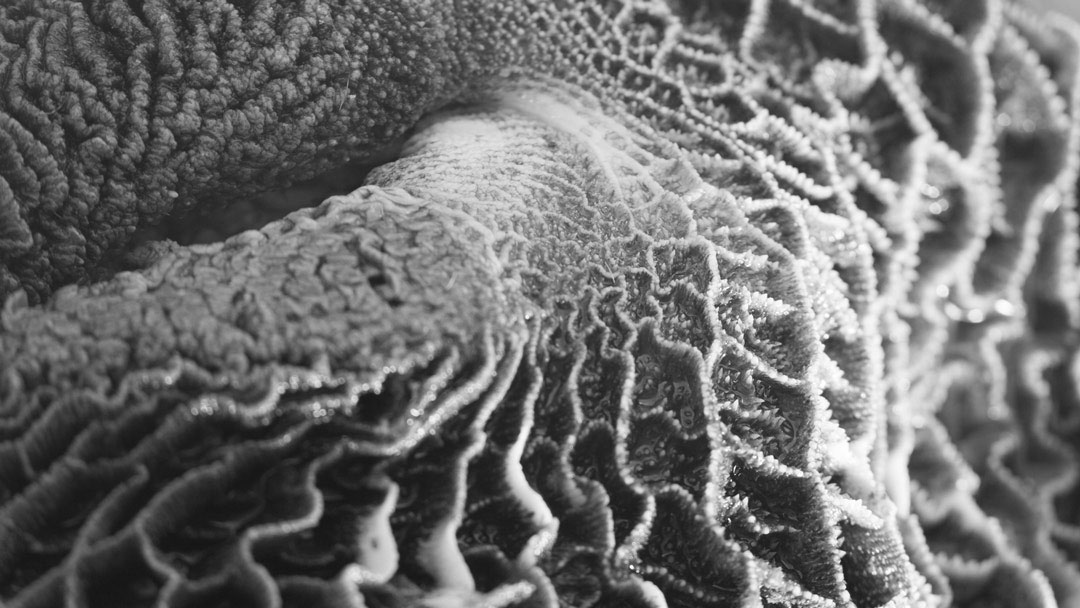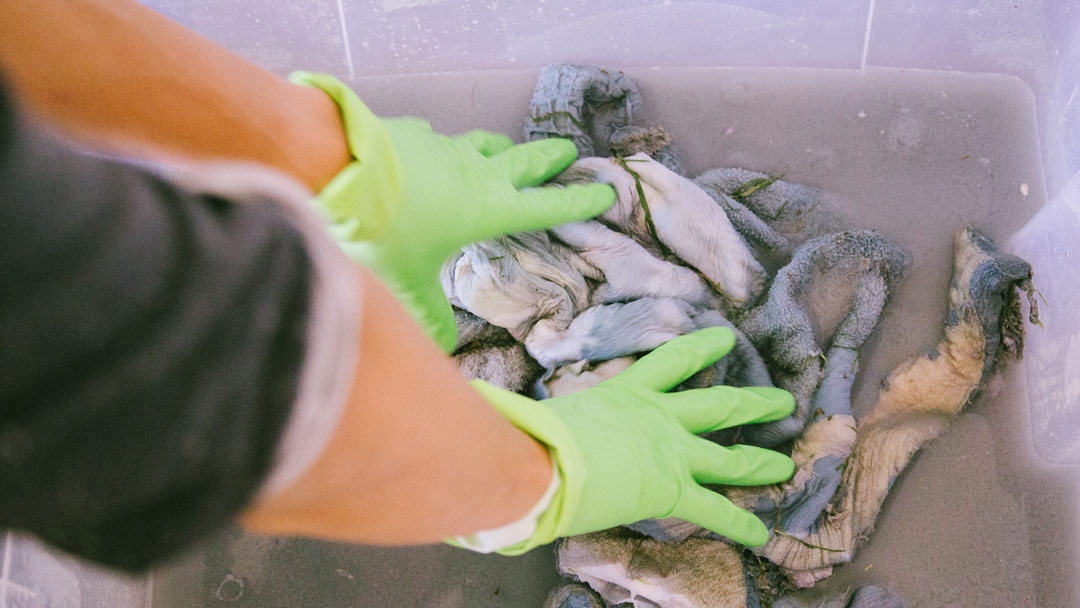Living Materials
Built-in-Table
Wooden Vessel
What makes materials valuable?
We are clueless about the production of our everday objects. Sometimes ignorace is bliss, for instance when it comes to the industrial processing of animals. My personal approach to materials is manual craft I followed the traditional work steps of the traditional leather production process. From slaughter to stitching. Thereby a "waste product" - the cow's stomach turned into a personal object of value.
Video of the project group's talk at the Biotopia event "Living Materials". My talk comes straight after a great introduction by Ralph Ammer. If you want to skip it, please forward the video to 4:21. There is an english translation down below.
I asked myself the question: What makes materials and objects valuable to us? How do values develop?
We daily surround ourselves with hundreds of products of which we know nothing. Neither the origin, nor the manufacturing process. In our society, it’s all about the product itself. We consume it, use it and don’t hesitate to discard it. To deal with the question for value I dedicated my semester-project to leather - one of the oldest materials used by humankind.
The story about leather starts at the cow’s paddock. After the animal is slaughtered you can start making something from the animal material.
I didn’t work with the cow’s skin but its stomach which is normally thrown away. It has beautiful structures which no one would normally see.
I started cleaning the cow’s stomach. Because of the smell this is a very unpleasant process. But somehow, during the daily work on my project I started kind of loving the stinky stomach. Finally, I made this wallet.
It is quite crooked, stiff and still stinks a bit. But through the process of making it, this wallet got very special for me and I even can overlook the smell. Maybe, this wallet the most valuable object I’ve ever possessed.


